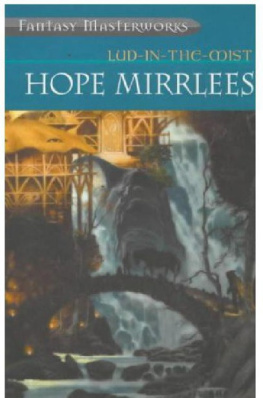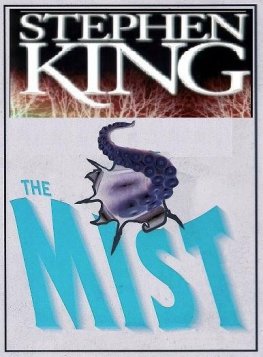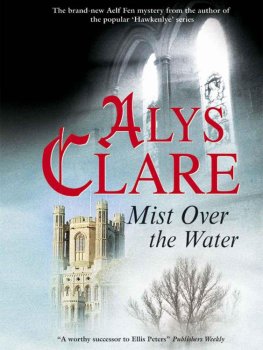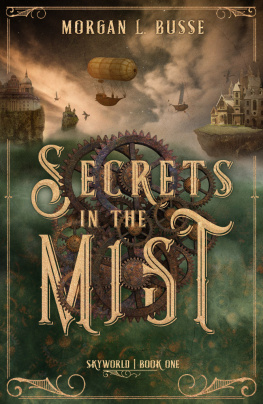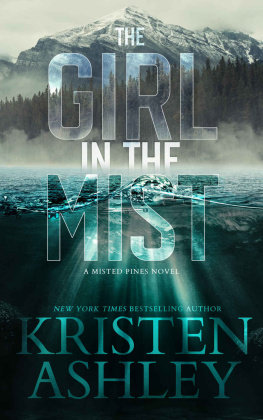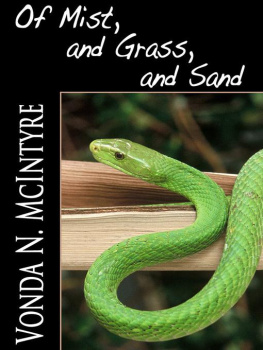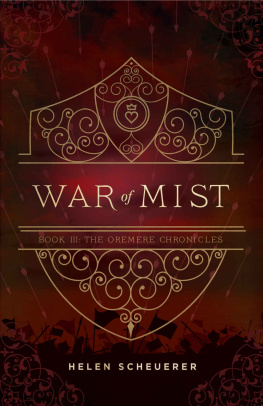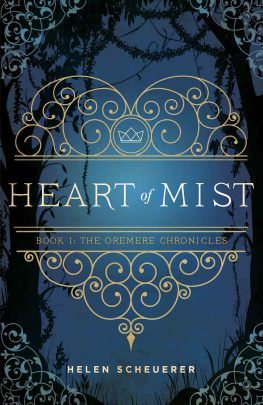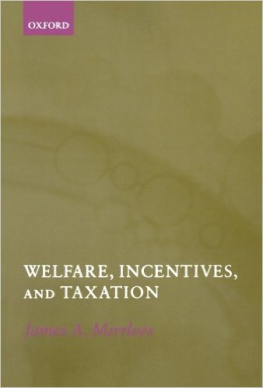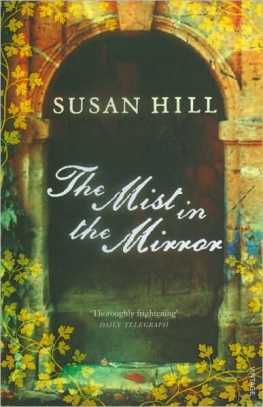Hope Mirrlees - LUD-IN-THE-MIST
Here you can read online Hope Mirrlees - LUD-IN-THE-MIST full text of the book (entire story) in english for free. Download pdf and epub, get meaning, cover and reviews about this ebook. year: 2000, publisher: Millennium, genre: Detective and thriller. Description of the work, (preface) as well as reviews are available. Best literature library LitArk.com created for fans of good reading and offers a wide selection of genres:
Romance novel
Science fiction
Adventure
Detective
Science
History
Home and family
Prose
Art
Politics
Computer
Non-fiction
Religion
Business
Children
Humor
Choose a favorite category and find really read worthwhile books. Enjoy immersion in the world of imagination, feel the emotions of the characters or learn something new for yourself, make an fascinating discovery.
- Book:LUD-IN-THE-MIST
- Author:
- Publisher:Millennium
- Genre:
- Year:2000
- Rating:5 / 5
- Favourites:Add to favourites
- Your mark:
- 100
- 1
- 2
- 3
- 4
- 5
LUD-IN-THE-MIST: summary, description and annotation
We offer to read an annotation, description, summary or preface (depends on what the author of the book "LUD-IN-THE-MIST" wrote himself). If you haven't found the necessary information about the book — write in the comments, we will try to find it.
LUD-IN-THE-MIST — read online for free the complete book (whole text) full work
Below is the text of the book, divided by pages. System saving the place of the last page read, allows you to conveniently read the book "LUD-IN-THE-MIST" online for free, without having to search again every time where you left off. Put a bookmark, and you can go to the page where you finished reading at any time.
Font size:
Interval:
Bookmark:
Lud-In-The-Mist
Hope Mirrlees
Fantasy Masterworks Volume 11
eGod
Lud-in-the-Mist (1926) is the third novel by Hope Mirrlees, and the only one still in print as of 2005. It continues the author's exploration of the themes of Life and Art, by a method already described in the preface of her first novel, Madeleine: One of Love's Jansenists (1919): "to turn from time to time upon the action the fantastic limelight of eternity, with a sudden effect of unreality and the hint of a world within a world".Whereas in Madeleine and The Counterplot Mirrlees took from historical figures, religions and literature the elements with which to build her stage, her use of a secondary-world setting in Lud-in-the-Mist links it to a tradition of high fantasy, and thence to its current locus of popularity. In 1970, an American reprint appeared without the author's permission, as part of the Ballantine Adult Fantasy series. It was subsequently reprinted by Orion Books in 2000 as part of their Fantasy Masterworks series[1]. But Lud-in-the-Mist's unconventional elements, equally responsible for its appeal to the fantasy readership and distinction within the genre, are better-understood if they are taken in the context of her whole oeuvre.In this novel, the law-abiding inhabitants of Lud-in-the-Mist, a city located at the confluence of the rivers Dapple and Dawl, in the fictional state of Dorimare, must contend with the influx of fairy fruit from the bordering Land of Faerie, whose presence they had sought to deny from their rational existence. Their mayor, the respectable Nathaniel Chanticleer, finds himself quite reluctantly at the center of the conflict.Lud-in-the-Mist begins with a quotation by Jane Harrison, whose influence is also found in Madeleine and The Counterplot. It is dedicated to the memory of Mirrlees's father.
by
Hope Mirrlees
First published 1926
To the Memory of My Father
The Sirens stand, as it would seem, to the ancient and the modern, for the impulses in life as yet immoralised, imperious longings, ecstasies, whether of love or art, or philosophy, magical voices calling to a man from his "Land of Heart's Desire," and to which if he hearken it may be that he will return no more - voices, too, which, whether a man sail by or stay to hearken, still sing on.
Jane Harrison.
The Free State of Dorimare was a very small country, but, seeing that it was bounded on the south by the sea and on the north and east by mountains, while its centre consisted of a rich plain, watered by two rivers, a considerable variety of scenery and vegetation was to be found within its borders. Indeed, towards the west, in striking contrast with the pastoral sobriety of the central plain, the aspect of the country became, if not tropical, at any rate distinctly exotic. Nor was this to be wondered at, perhaps; for beyond the Debatable Hills (the boundary of Dorimare in the west) lay Fairyland. There had, however, been no intercourse between the two countries for many centuries.
The social and commercial centre of Dorimare was its capital, Lud-in-the-Mist, which was situated at the confluence of two rivers about ten miles from the sea and fifty from the Elfin Hills.
Lud-in-the-Mist had all the things that make an old town pleasant. It had an ancient Guild Hall, built of mellow golden bricks and covered with ivy and, when the sun shone on it, it looked like a rotten apricot; it had a harbour in which rode vessels with white and red and tawny sails; it had flat brick houses - not the mere carapace of human beings, but ancient living creatures, renewing and modifying themselves with each generation under their changeless antique roofs. It had old arches, framing delicate landscapes that one could walk into, and a picturesque old graveyard on the top of a hill, and little open squares where comic baroque statues of dead citizens held levees attended by birds and lovers and insects and children. It had, indeed, more than its share of pleasant things; for, as we have seen, it had two rivers.
Also, it was plentifully planted with trees.
One of the handsomest houses of Lud-in-the-Mist had belonged for generations to the family of Chanticleer. It was of red brick, and the front, which looked on to a quiet lane leading into the High Street, was covered with stucco, on which flowers and fruit and shells were delicately modelled, while over the door was emblazoned a fine, stylized cock - the badge of the family. Behind, it had a spacious garden, which stretched down to the river Dapple. Though it had no lack of flowers, they did not immediately meet the eye, but were imprisoned in a walled kitchen-garden, where they were planted in neat ribands, edging the plots of vegetables. Here, too, in spring was to be found the pleasantest of all garden conjunctions - thick yew hedges and fruit trees in blossom. Outside this kitchen-garden there was no need of flowers, for they had many substitutes. Let a thing be but a sort of punctual surprise, like the first cache of violets in March, let it be delicate, painted and gratuitous, hinting that the Creator is solely preoccupied with aesthetic considerations, and combines disparate objects simply because they look so well together, and that thing will admirably fill the role of a flower.
In early summer it was the doves, with the bloom of plums on their breasts, waddling on their coral legs over the wide expanse of lawn, to which their propinquity gave an almost startling greenness, that were the flowers in the Chanticleers' garden. And the trunks of birches are as good, any day, as white blossom, even if there had not been the acacias in flower. And there was a white peacock which, in spite of its restlessness and harsh shrieks, had something about it, too, of a flower. And the Dapple itself, stained like a palette, with great daubs of colour reflected from sky and earth, and carrying on its surface, in autumn, red and yellow leaves which may have fallen on it from the trees of Fairyland, where it had its source - even the Dapple might be considered as a flower growing in the garden of the Chanticleers.
There was also a pleached alley of hornbeams. To the imaginative, it is always something of an adventure to walk down a pleached alley. You enter boldly enough, but soon you find yourself wishing you had stayed outside - it is not air that you are breathing, but silence, the almost palpable silence of trees. And is the only exit that small round hole in the distance? Why, you will never be able to squeeze through that ! You must turn backtoo late! The spacious portal by which you entered has in its turn shrunk to a small round hole.
Master Nathaniel Chanticleer, the actual head of the family, was a typical Dorimarite in appearance; rotund, rubicund, red-haired, with hazel eyes in which the jokes, before he uttered them, twinkled like a trout in a burn. Spiritually, too, he passed for a typical Dorimarite; though, indeed, it is never safe to classify the souls of one's neighbors; one is apt, in the long run, to be proved a fool. You should regard each meeting with a friend as a sitting he is unwittingly giving you for a portrait - a portrait that, probably, when you or he die, will still be unfinished. And, though this is an absorbing pursuit, nevertheless, the painters are apt to end pessimists. For however handsome and merry may be the face, however rich may be the background, in the first rough sketch of each portrait, yet with every added stroke of the brush, with every tiny readjustment of the "values," with every modification of the chiaroscuro, the eyes looking out at you grow more disquieting. And, finally, it is your own face that you are staring at in terror, as in a mirror by candle-light, when all the house is still.
Font size:
Interval:
Bookmark:
Similar books «LUD-IN-THE-MIST»
Look at similar books to LUD-IN-THE-MIST. We have selected literature similar in name and meaning in the hope of providing readers with more options to find new, interesting, not yet read works.
Discussion, reviews of the book LUD-IN-THE-MIST and just readers' own opinions. Leave your comments, write what you think about the work, its meaning or the main characters. Specify what exactly you liked and what you didn't like, and why you think so.

